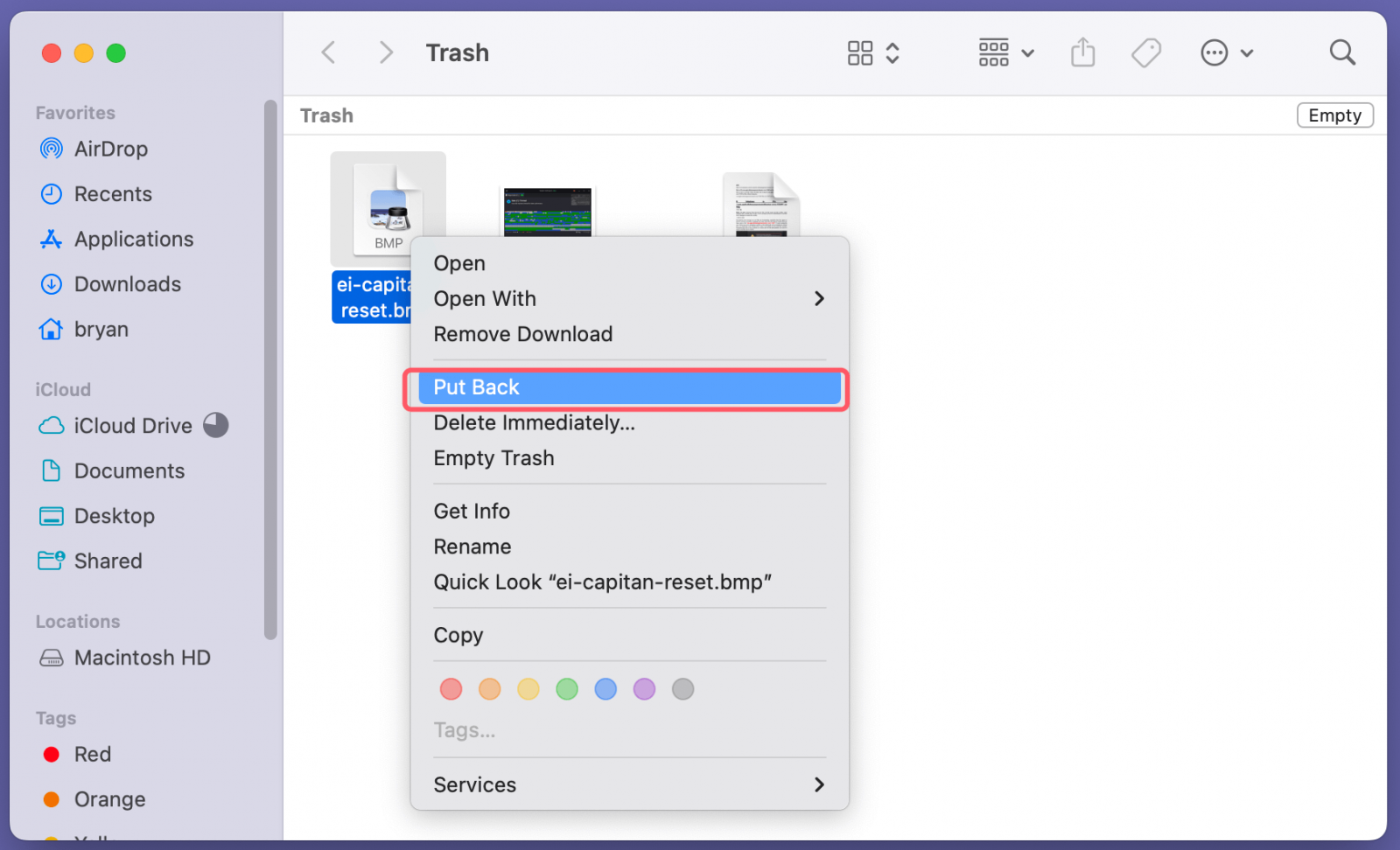Summary: We will introduce what is BMP file and how to use data recovery software - Donemax Data Recovery to recover permanently deleted BMP images, recover lost BMP images from formatted or damaged drive, USB drive, SSD, SD card, etc.
PAGE CONTENT:
In the digital era, images play a pivotal role in communication, art, and documentation. Among the various image formats, BMP (Bitmap Image File) stands out due to its simplicity and high-quality representation. However, like all digital files, BMP images can be lost or deleted, leading to frustration, especially for those who rely on them for personal or professional purposes. In this article, we will delve into the BMP format, explore the reasons behind the loss of BMP images, and provide practical methods for recovering lost BMP files.
What is BMP?
Definition of BMP (Bitmap Image File):
BMP, or Bitmap Image File, is a raster graphics image format commonly used to store digital images. The BMP format was developed by Microsoft and IBM in the early 1990s and is primarily associated with the Windows operating system. It is designed to provide a straightforward method for storing images without the complexity of compression algorithms, allowing for high-quality graphics.

Technical Specifications:
One of the defining characteristics of BMP files is their uncompressed nature. This means that BMP files retain all pixel data without any loss of quality, making them ideal for applications that require high fidelity, such as graphic design and printing.
Key technical specifications of BMP files include:
- Color Depth: BMP files can support various color depths, including 1-bit (monochrome), 4-bit (16 colors), 8-bit (256 colors), 24-bit (over 16 million colors), and 32-bit (includes an alpha channel for transparency).
- File Size: Due to their uncompressed format, BMP files tend to be larger than other image formats like JPEG or PNG. A typical 24-bit BMP image can be quite hefty, with file sizes ranging from a few kilobytes to several megabytes, depending on the image dimensions.
- Resolution: BMP files can support any resolution, making them versatile for different applications. However, higher resolutions contribute to larger file sizes.
Common Use Cases:
BMP images are commonly used in various scenarios, including:
- Graphic Design: Designers often use BMP files for creating and editing high-resolution graphics.
- Windows Systems: The BMP format is native to Windows and is often used for wallpapers, icons, and buttons in software applications.
- Digital Art: Artists may choose BMP for detailed works that require pixel-perfect accuracy.
BMP vs Other Image Formats:
When comparing BMP with other popular image formats, several distinctions arise:
- JPEG: JPEG is a compressed format that sacrifices some image quality for smaller file sizes. It is ideal for photographs but not suitable for graphics that require precise edges and details.
- PNG: PNG is a lossless format that supports transparency and is more versatile than BMP. However, it can also result in larger file sizes compared to JPEG.
- GIF: GIF is suitable for simple animations and supports a limited color palette, making it less ideal for detailed images compared to BMP.
In summary, while BMP is excellent for high-quality graphics, other formats may be more suitable for everyday photography or web usage due to their smaller file sizes and additional features.
Why BMP Images Get Lost or Deleted?
Despite their importance, BMP images can be lost or deleted for various reasons, which can be frustrating for users who rely on these files. Here are some common scenarios leading to BMP image loss:
Accidental Deletion
One of the most frequent causes of lost BMP images is accidental deletion. Users may mistakenly delete files while cleaning up their storage or during file management operations.
Hard Drive or Storage Failure
Hardware issues can lead to data loss. Hard drives, whether internal or external, can fail due to mechanical wear, power surges, or other factors, rendering stored BMP images inaccessible.
Formatting the Storage Device
Formatting a hard drive or USB drive can lead to the permanent loss of BMP images. Users might format their devices to prepare for new data or to fix issues, forgetting to back up important files first.
Virus or Malware Attacks
Malware can corrupt files, making them unreadable or causing them to disappear entirely. Virus attacks can lead to the loss of BMP images, along with other data.
System Crashes or Corrupt Files
Unexpected system crashes can disrupt file operations, leading to data corruption. If a BMP file is being written or modified during a crash, it may become corrupted and unrecognizable.
How to Recover Lost BMP Images?
Recovering lost BMP images is often possible, depending on the circumstances of their loss. Below are several methods to recover lost BMP files effectively.
Method 1. Check Recycle Bin (for Windows) or Trash (for Mac)
Before diving into complex recovery methods, the first step should always be to check the Recycle Bin on Windows or the Trash on Mac. If the BMP file was recently deleted, it might still be there.
- Windows: Open the Recycle Bin, locate your BMP file, right-click it, and select Restore. The file will be restored to its original location.
![recovering lost BMP files]()
- Mac: Open the Trash, find your BMP file, right-click, and choose Put Back to restore it to its original folder.
![recovering lost BMP files]()
Method 2. Use a Backup
If you regularly back up your data, you might be able to recover your lost BMP images from an external backup. Common backup methods include:
- Cloud Storage: Services like Google Drive, Dropbox, and OneDrive often maintain previous versions of files, allowing you to restore deleted images.
- External Hard Drives: If you back up your computer to an external hard drive, check it for the lost BMP files.
Method 3. Use File Recovery Software
If your BMP images are not in the Recycle Bin or backed up, file recovery software can often retrieve lost files.
Donemax Data Recovery is a popular data recovery tool for Windows and Mac that can recover a variety of file types, including BMP images.
Donemax Data Recovery
- Recover permanently deleted BMP images after emptying trash or recycle bin.
- Recover lost BMP images from formatted or erased drive.
- Recover BMP images from inaccessible or damaged drive.
Donemax Data Recovery is an DIY data recovery tool. Follow the steps below to recover lost BMP images:
Step 1. Download and install Donemax Data Recovery on your computer, then open it to start data recovery. Select the drive where you delete or lose the BMP images.

Step 2. Click on Scan button to deeply scan the selected drive and find all deleted/lost files including the BMP images.

Step 3. Once the scan is completed, you can preview all recoverable files. Then select the wanted files (BMP images), click on Recover button to save them.

Method 4. Professional Data Recovery Services
If all else fails, or if the lost BMP files are of utmost importance (e.g., critical work projects), it may be worth considering expert data recovery services. To recover data from faulty or damaged storage devices, these services use specialized methods and equipment.
When to Seek Professional Help:
- When your storage device makes unusual noises, indicating physical damage.
- If you cannot access the files after multiple recovery attempts.
- If the data is irreplaceable, and you cannot afford to lose it.
Best Practices to Prevent BMP Image Loss
While recovery methods can be effective, prevention is always better than cure. Here are some best practices to minimize the risk of losing BMP images:
● Regular Backups
Implement a routine for backing up your files. Use external hard drives or cloud storage solutions to keep copies of your important BMP images. Regularly update your backups to ensure they contain the latest files.
● Use Reliable Antivirus Software
Protect your computer from viruses and malware by using reputable antivirus software. Keep your software updated to defend against new threats, reducing the chances of data loss due to malicious attacks.
● Avoid Interrupting File Transfers
During file transfers or editing sessions, avoid shutting down or restarting your computer. Interruptions can lead to corrupted files, making them unrecoverable.
● Use SSDs Instead of HDDs
Consider using solid-state drives (SSDs) over traditional hard disk drives (HDDs) for storing important files. SSDs are more resistant to physical damage and are generally faster and more reliable, reducing the chances of data loss.
Conclusion
BMP images play a significant role in various fields, offering high-quality visuals that are essential for graphic design, photography, and digital art. While losing these images can be frustrating, understanding the BMP format, the reasons for image loss, and effective recovery methods can help mitigate the situation. By implementing best practices to prevent data loss, you can safeguard your valuable BMP files and ensure they remain accessible when needed. Whether through simple recovery methods or professional services, taking prompt action can often lead to successful recovery, allowing you to regain your lost images and continue your creative work without major disruptions.


Donemax Data Recovery
Powerful, safe & easy-to-use data recovery software to easily and completely recover deleted, formatted, inaccessible and lost data from PC, Mac, HDD, SSD, USB drive, camera, SD card, RAID and other storage devices.
Related Articles
- Jun 20, 2025Top 4 Methods to Restore InDesign Documents (INDD) File
- Jun 20, 2024Best LaCie Data Recovery Software: Donemax Data Recovery
- Jul 07, 2025What is EXE File, How to Recover Deleted EXE File?
- May 29, 2025Best 4 Methods to Recover Deleted CDR File
- May 19, 2025[2025 Updated] Top 5 Data Recovery Services
- May 23, 2025Recover Deleted ISO File: A Comprehensive Guide to Restore Your Disk Images

Christina
Christina is the senior editor of Donemax software who has worked in the company for 4+ years. She mainly writes the guides and solutions about data erasure, data transferring, data recovery and disk cloning to help users get the most out of their Windows and Mac. She likes to travel, enjoy country music and play games in her spare time.

Gerhard Chou
In order to effectively solve the problems for our customers, every article and troubleshooting solution published on our website has been strictly tested and practiced. Our editors love researching and using computers and testing software, and are willing to help computer users with their problems


